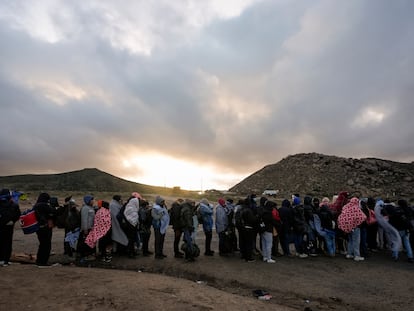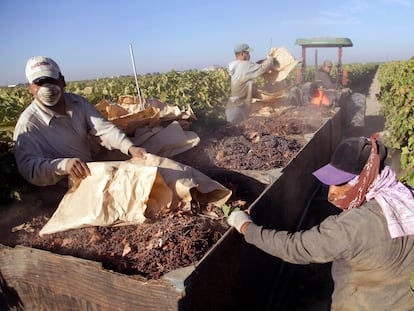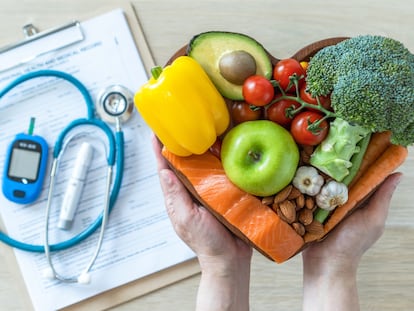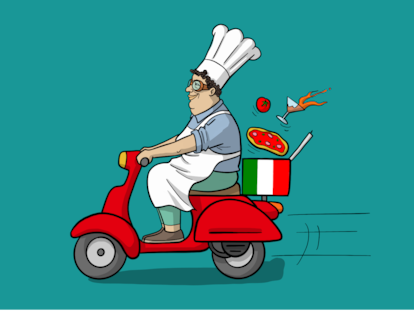Waiting for the harvest under the tariff storm: Trump factor paralyzes US farmers
The trade war, combined with the Republican administration’s cuts, is fueling fears among American producers
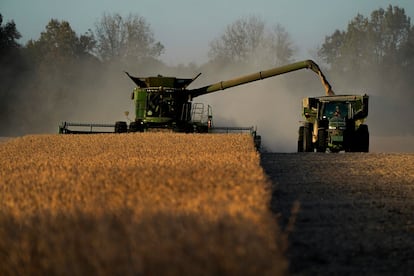

The Trump factor has added to the long and uncertain wait between planting and harvest. The fear is usually that an unexpected storm will wipe out the fields, that an unseasonal frost will kill the plants when they are at their weakest, or that an unsuspected pest will devastate a defenseless crop. But this year, the president’s tariff war has put their futures up in the air. While plantings increase as spring turns to summer and the trade landscape changes week by week, farmers wait nervously, as sowing is often only possible thanks to a loan that will be repaid when the harvest has been sold, many months down the road. Between the hope for new trade agreements that stabilize the situation and the bitter memories of the Republican president’s first administration, which affected the industry at historic levels, American farmers are holding their breath.
The U.S. agricultural and livestock market has for decades been dedicated to the export of commodities such as corn, soybeans, and pork, and to a much lesser extent, specialized products or those for local consumption. Therefore, a shock to international trade has profound repercussions for the domestic agricultural industry, especially considering that 47% of exports go to the three countries the president has targeted most with tariffs in recent months: China, Mexico, and Canada. At the end of April, China canceled an order for 12,000 tons of U.S. pork, the largest cancellation since the start of the Covid pandemic.
While stock markets reacted very well to the announcement of temporary tariff reductions by the United States and China following initial talks last weekend in Switzerland, farmers are more skeptical. “Even if some trade deal is announced, you don’t really know how long it’s going to be in place. What’s going to happen tomorrow,” says Ben Lilliston, director of rural strategies and climate change at the Institute for Agriculture and Trade Policy. And for now, he adds, this is already leading to a reduction in investment by farmers, who are buying less new machinery, for example, to offset the increase in other production costs, such as essential fertilizers, the vast majority of whose precursors come from Canada.
But the effects of the tariff war on both export and import markets, as well as on logistics itself, with container shortages already beginning to be reported, are not the only cause for concern. “When you combine that with what they’re doing at USDA, which is drastically cutting the department staffing, closing buildings and cutting programs that support farmers who are growing for local and regional markets, you’re sort of hitting them from all sides: we’re hitting the exports and also shrinking resources to help shift and focus locally or regionally,” adds Lilliston, who believes the possibility of trade dumping — the subsidized shipment of products to other countries below market prices to avoid mass producer defaults — is very real.
Memory of bankruptcies looms
During Trump’s first term in the White House, the number of farms filing for bankruptcy in the U.S. reached historic levels. Between 2018 and 2019, they rose 24% after the trade war unleashed then — a children’s quarrel compared to the one Trump is waging now — costing American producers $27 billion.
“I would expect that when things get tight, we’ll see more bankruptcies like in the first trade fight. The biggest economic asset that farmers have is their land, and farmland is still worth something and you always find either bigger farmers or outside investors that are interested in that. I think we will see that but I wouldn’t expect production necessarily to go down, but I would expect a consolidation of ownership,” Lilliston predicts.
The forecast is based on previous experience. Between 2017 and 2022, the number of farms in the country declined at the fastest pace in two decades, with small farms being the most affected. In contrast, the number of farms with profits between $2.5 million and $5 million doubled.
This wouldn’t have happened without the federal government’s $28 billion bailout payments at the time, which particularly benefited large producers. The richest 1% received an average of $183,331, while the poorest 80% received less than $5,000 each, according to a 2019 analysis by the Environmental Working Group, which stated that the public was subsidizing growing inequality in the industry.
The landscape hasn’t changed much since then, Lilliston laments. “I think the main thing is we need to pass a new farm bill. Right now, it has all the incentives to grow commodity crops for global markets. I think it’s clear that the Trump administration is going to disrupt those markets over the next four years and make them unpredictable and probably limit them in some way. It would be a major shift, but it’s going to be necessary. Otherwise, there’s just going to have to be a huge bailout. I think they just need to have a clear plan. I don’t even know what to say about what they should do, because none of it makes any sense. It might make sense in their world, but not in the world that the rest of us live in.”
In the vineyard-filled hills of Sonoma, in northern California, George Davis — although he just spent a couple of days meeting with members of Congress in the capital along with producers from around the country to voice his concerns — believes that the industry can’t just wait idly for Washington to act and, instead, tries to see opportunity amid the uncertainty. “We need to develop our consumer base, engage more with them. When things get tough, people reach out and form communities. And we need to strengthen our communities, whether through direct relationships with customers or among like-minded producers, or through political action. It’s about forming networks and reaching out to like-minded people to develop survival strategies and make changes for the future.”
Sign up for our weekly newsletter to get more English-language news coverage from EL PAÍS USA Edition
Tu suscripción se está usando en otro dispositivo
¿Quieres añadir otro usuario a tu suscripción?
Si continúas leyendo en este dispositivo, no se podrá leer en el otro.
FlechaTu suscripción se está usando en otro dispositivo y solo puedes acceder a EL PAÍS desde un dispositivo a la vez.
Si quieres compartir tu cuenta, cambia tu suscripción a la modalidad Premium, así podrás añadir otro usuario. Cada uno accederá con su propia cuenta de email, lo que os permitirá personalizar vuestra experiencia en EL PAÍS.
¿Tienes una suscripción de empresa? Accede aquí para contratar más cuentas.
En el caso de no saber quién está usando tu cuenta, te recomendamos cambiar tu contraseña aquí.
Si decides continuar compartiendo tu cuenta, este mensaje se mostrará en tu dispositivo y en el de la otra persona que está usando tu cuenta de forma indefinida, afectando a tu experiencia de lectura. Puedes consultar aquí los términos y condiciones de la suscripción digital.
More information
Archived In
Últimas noticias
Maduro pleads not guilty before the federal court in New York: ‘I am still the president of Venezuela’
A new test can detect Alzheimer’s from a finger prick
UN team enters Sudanese city of El Fasher after paramilitary massacre: ‘It’s like a ghost town’
A recipe for resistance: Indigenous peoples politicize their struggles from the kitchen
Most viewed
- Gilles Lipovetsky: ‘If you want to live better and fall in love, take Prozac, don’t look to philosophy’
- Alain Aspect, Nobel laureate in physics: ‘Einstein was so smart that he would have had to recognize quantum entanglement’
- Alvin Hellerstein, a 92-year-old judge appointed by Bill Clinton, to preside over Maduro’s trial in New York
- Why oil has been at the center of Venezuela-US conflicts for decades
- Maduro’s downfall puts China’s relationship with Venezuela to the test
